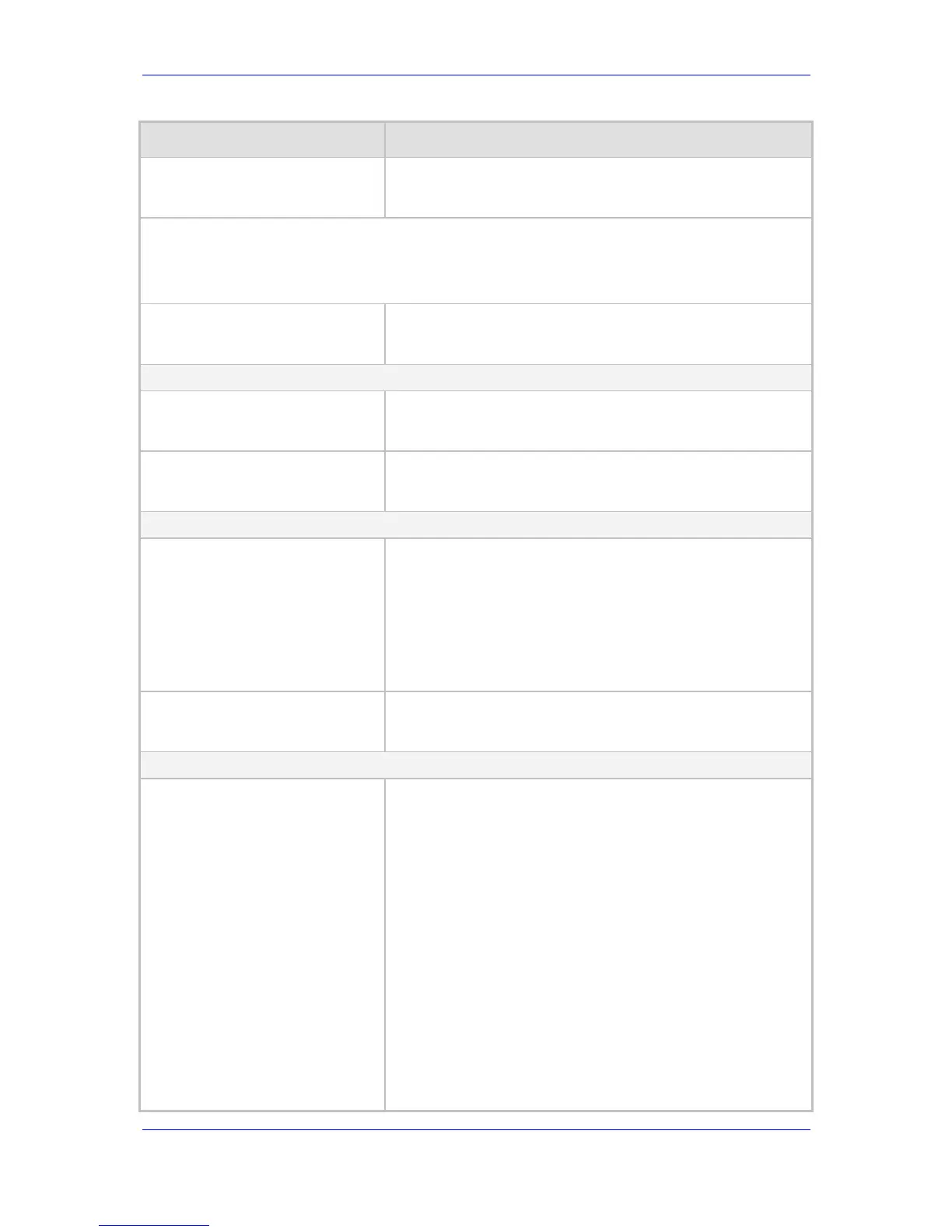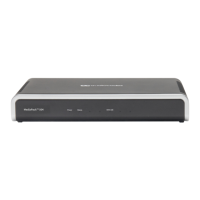Version 6.2 469 February 2011
SIP User's Manual 10. Configuration Parameters Reference
Parameter Description
Web: Do Not Disturb
EMS: CF Do Not Disturb
[KeyCFDoNotDisturb]
Keypad sequence that activates the Do Not Disturb option
(immediately reject incoming calls).
To activate the required forward method from the telephone:
1 Dial the user-defined sequence number on the keypad; a dial tone is heard.
2 Dial the telephone number to which the call is forwarded (terminate the number with #); a
confirmation tone is heard.
Web: Deactivate
EMS: Call Forward Deactivation
[KeyCFDeact]
Keypad sequence that deactivates any of the call forward
options. After the sequence is pressed, a confirmation tone is
heard.
Keypad Feature - Caller ID Restriction Parameters
Web: Activate
EMS: CLIR
[KeyCLIR]
Keypad sequence that activates the restricted Caller ID option.
After the sequence is pressed, a confirmation tone is heard.
Web: Deactivate
EMS: CLIR Deactivation
[KeyCLIRDeact]
Keypad sequence that deactivates the restricted Caller ID
option. After the sequence is pressed, a confirmation tone is
heard.
Keypad Feature - Hotline Parameters
Web: Activate
EMS: Hot Line
[KeyHotLine]
Keypad sequence that activates the delayed hotline option.
To activate the delayed hotline option from the telephone,
perform the following:
1 Dial the user-defined sequence number on the keypad; a
dial tone is heard.
2 Dial the telephone number to which the phone automatically
dials after a configurable delay (terminate the number with
#); a confirmation tone is heard.
Web: Deactivate
EMS: Hot Line Deactivation
[KeyHotLineDeact]
Keypad sequence that deactivates the delayed hotline option.
After the sequence is pressed, a confirmation tone is heard.
Keypad Feature - Transfer Parameters
Web: Blind
EMS: Blind Transfer
[KeyBlindTransfer]
Keypad sequence that activates blind transfer for Tel-to-IP
calls. There are two possible scenarios:
Option 1: After this sequence is dialed, the current call is put
on hold (using Re-INVITE), a dial tone is played to the
phone and then phone number collection starts.
Option 2: A Hook-Flash is pressed, the current call is put on
hold, a dial tone is played to the phone, and then digit
collection starts. After this sequence is identified, the device
continues the collection of the destination phone number.
For both options, after the phone number is collected, it's sent
to the transferee in a SIP REFER request (without a Replaces
header). The call is then terminated and a confirmation tone is
played to the phone. If the phone number collection fails due to
a mismatch, a reorder tone is played to the phone.
Notes:
This parameter is applicable to FXO and FXS interfaces (but
for FXO the Web interface does not display this parameter).
It is possible to configure whether the KeyBlindTransfer code

